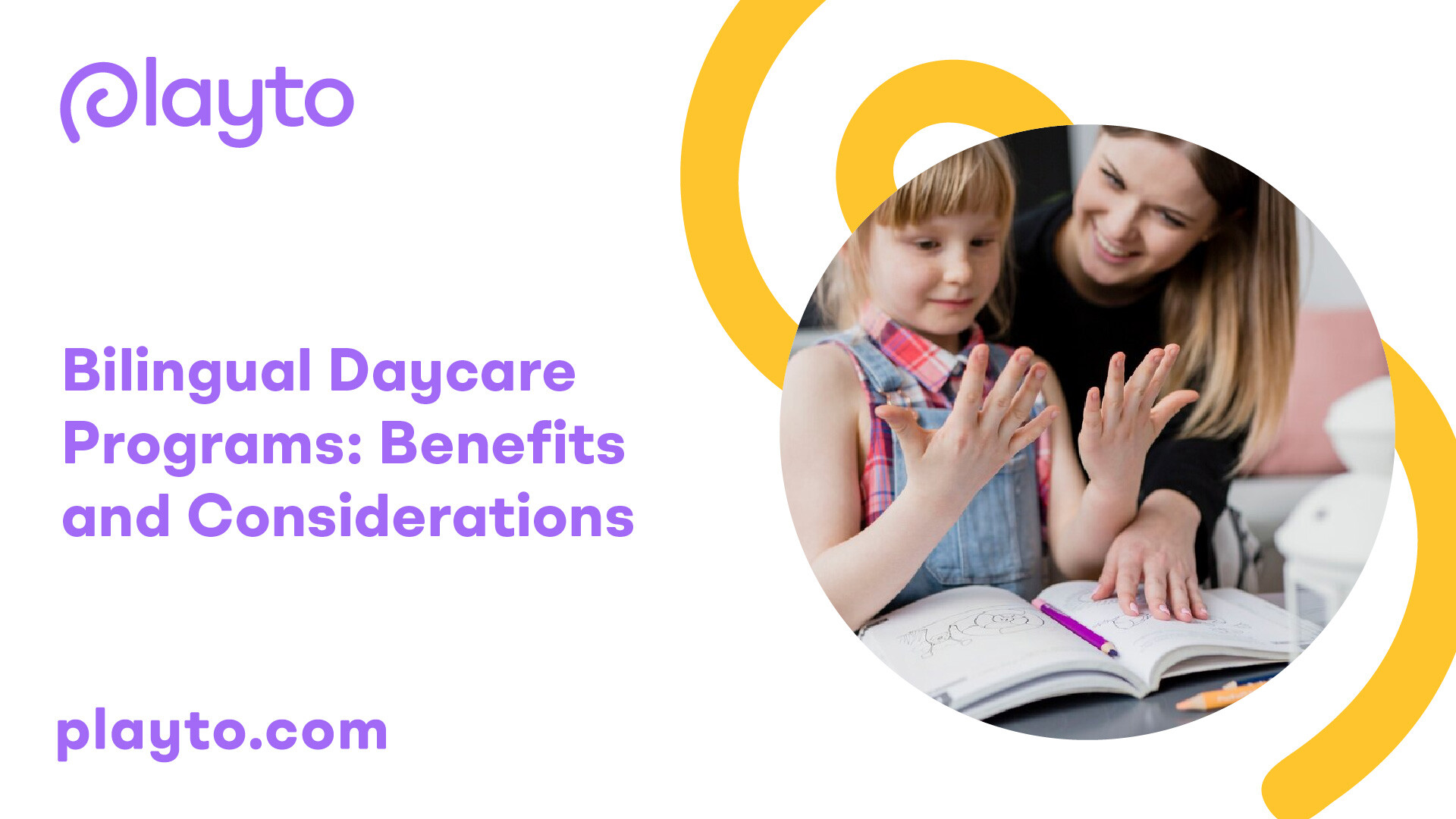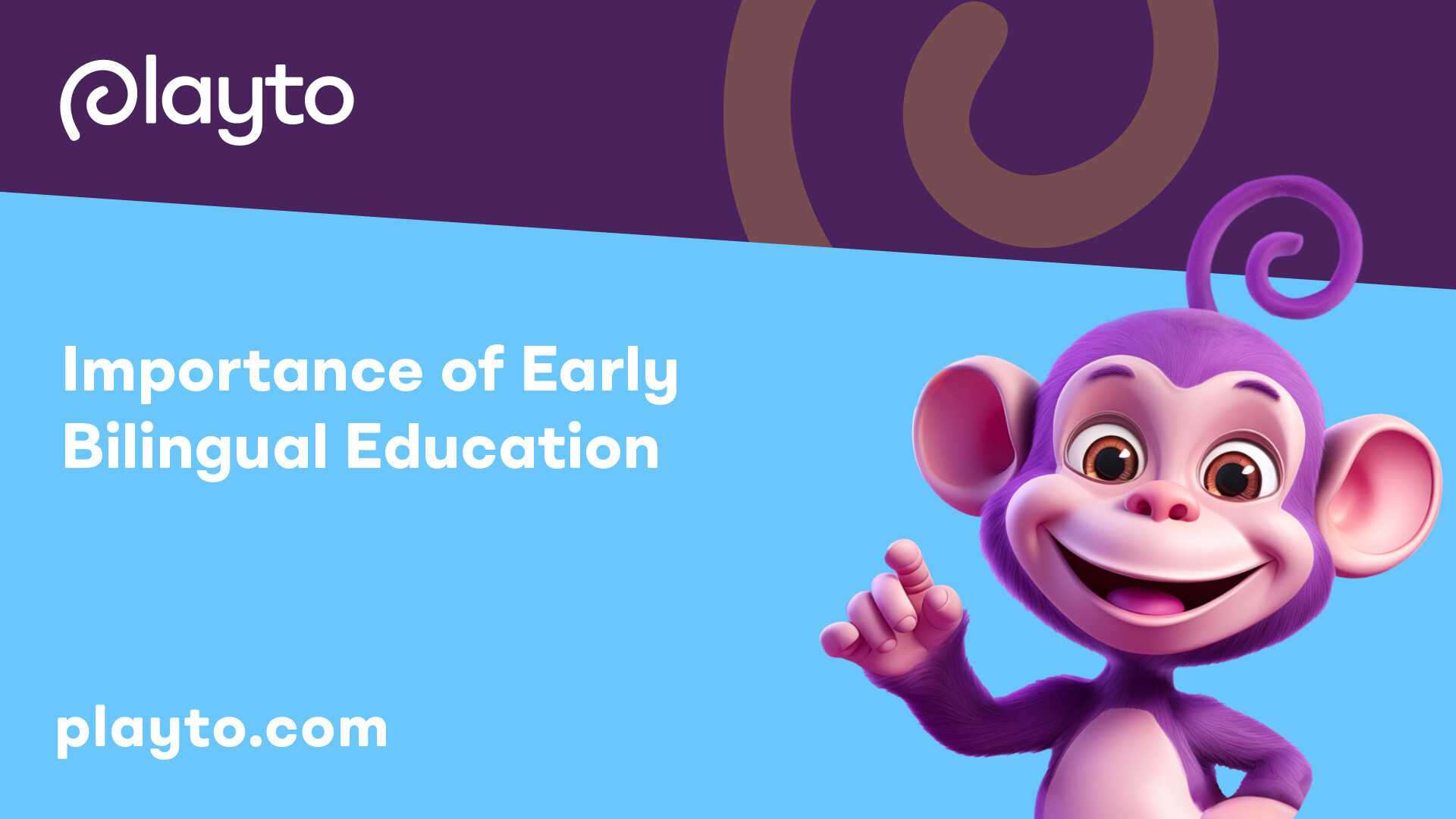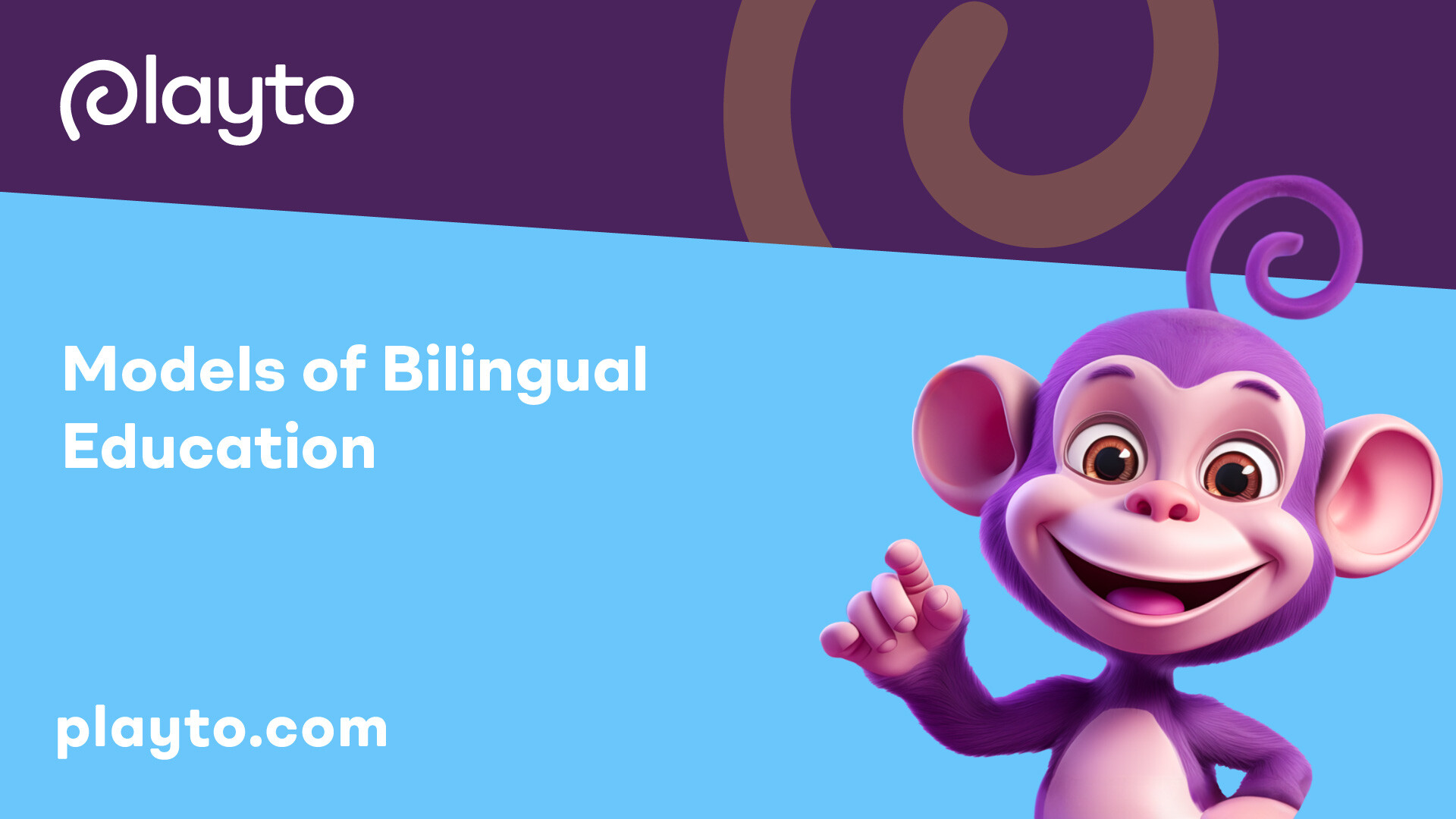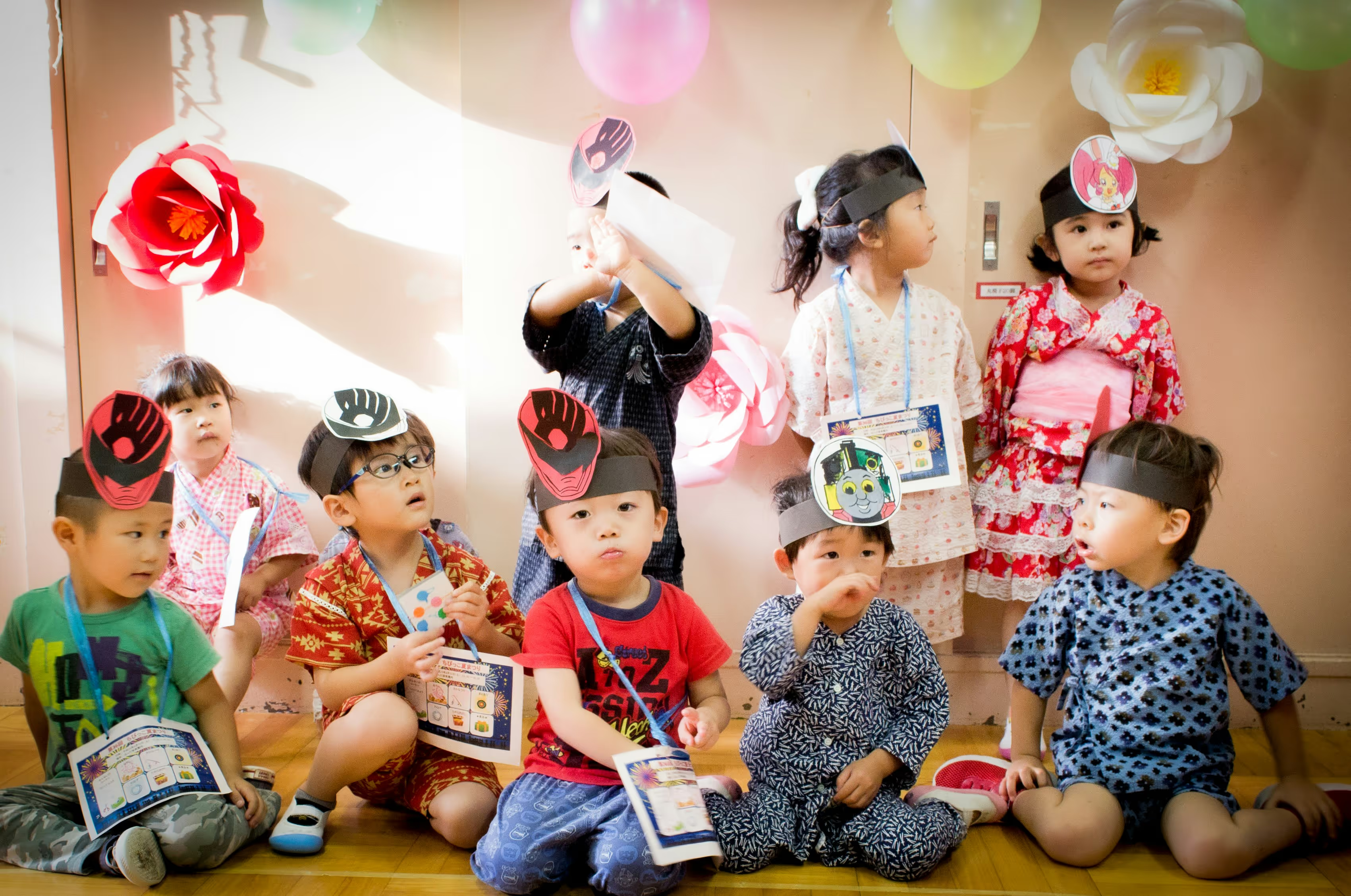Benefits of Bilingual Daycare Programs
Bilingual daycare programs offer numerous benefits for young children, including cognitive advantages and the development of social and emotional skills. These advantages contribute to their overall growth and development.

Cognitive Advantages
Bilingual education provides cognitive benefits for children attending daycare programs. Research has shown that bilingual children demonstrate enhanced cognitive skills compared to their monolingual peers. Bilingualism promotes cognitive flexibility, which includes skills like inhibition and task switching. This leads to improved attention, reduced distractions, and better focus on assignments and duties [1].
Additionally, bilingual children often develop strong problem-solving abilities and exhibit advanced critical thinking skills. These cognitive advantages can lead to improved academic performance as they progress through their educational journey.
Social and Emotional Skills
Bilingual daycare programs also play a role in the development of social and emotional skills in children. Bilingual children have been found to have a head start in tests of perspective-taking and theory of mind, demonstrating a greater understanding of others' thoughts and feelings from a young age [2]. This ability to navigate different perspectives and empathize with others fosters positive social interactions and relationships.
Moreover, bilingual education exposes children to diverse cultures and backgrounds, creating an environment of acceptance and appreciation for differences. By engaging with different languages and cultures, children become more comfortable with diversity and develop a broader worldview [1].
Participating in a bilingual daycare program can also enhance communication skills. Bilingual children often demonstrate strong verbal abilities and are adept at switching between languages. This adaptability in language use can facilitate effective communication and expression, strengthening their social interactions and relationships.
In conclusion, bilingual daycare programs provide cognitive advantages and foster the development of social and emotional skills in young children. These benefits contribute to their overall growth, preparing them for future academic success and a diverse society.
Importance of Early Bilingual Education
When it comes to early childhood education, bilingual programs have gained recognition for the numerous benefits they offer. Here, we will explore the importance of early bilingual education, focusing on language development in preschool and the foundation it creates for academic success.

Language Development in Preschool
Research has shown that early childhood education plays a crucial role in preparing young English language learners (ELLs) for future academic achievements. Children who develop basic foundational skills in language and literacy during preschool are better equipped for success when they enter kindergarten.
In bilingual daycare programs, children have the opportunity to learn and practice two languages simultaneously. This exposure to multiple languages in a structured and supportive environment encourages language development and fosters bilingualism. Bilingual preschools often incorporate play-based activities, songs, stories, and interactive experiences to promote language acquisition.
It is important to note that children who have developed early literacy skills in their first language will find it easier to develop those same skills in English. Parents who are not proficient in English should be encouraged to help their children learn to read using their home language as a foundation for instruction. This approach not only supports the development of bilingualism but also enhances overall literacy skills.
Foundation for Academic Success
High-quality early childhood education programs have a significant impact on children's later academic achievement. By offering research-based, age-appropriate instruction in early language and literacy skills, bilingual daycare programs ensure that ELLs are equipped with the necessary tools for success in kindergarten and beyond [3].
Early exposure to a second language in a structured educational setting helps children develop cognitive abilities, such as problem-solving, critical thinking, and multitasking skills. These skills not only benefit language acquisition but also serve as a strong foundation for academic success across various subjects.
Moreover, research has shown that developing basic foundational skills in language and literacy, such as alphabet knowledge, phonological awareness, and print awareness, significantly contributes to later reading achievement [3]. Bilingual daycare programs provide an environment where children can acquire and enhance these skills in both their first language and English, setting them up for success in reading and language arts.
By fostering language development in preschool and establishing a solid foundation for academic success, early bilingual education equips children with the necessary skills to thrive in their educational journey. These programs offer a unique opportunity for children to develop language proficiency in multiple languages, preparing them for a diverse and interconnected world.
Models of Bilingual Education
When it comes to bilingual education in daycare programs, there are different models that institutions may adopt to support language development and acquisition. Two commonly used models are the Fifty-Fifty Dual Language Model and the English Language Development Model.

Fifty-Fifty Dual Language Model
The Fifty-Fifty Dual Language Model, also known as Two-Way Immersion, aims to provide children with a balanced bilingual education. In this model, children experience both English and their home language in all content areas, ensuring that they develop proficiency in both languages. The instruction is typically split equally between the two languages, allowing children to learn and interact with peers who are native speakers of different languages.
One popular variation of the Fifty-Fifty Dual Language Model is the 50/50 model, where coursework is evenly split between English and the target language throughout the program. Another variation is the 90/10 model, which starts with 90% of instruction in the target language and gradually transitions to a 50/50 ratio [6]. These models aim to facilitate biliteracy by taking advantage of children's natural language acquisition ability.
English Language Development Model
The English Language Development Model with Home Language Support focuses primarily on teaching in English while integrating home language and multicultural supports throughout the daily routine. This model recognizes the importance of supporting children's home language while nurturing their English language development. It provides a structured and supportive environment for children to learn English while maintaining their native language skills.
In daycare programs that implement the English Language Development Model, teachers use strategies to support language acquisition, such as personalized oral language learning (POLL) strategies. These strategies involve tailoring instruction to individual children's language needs, scaffolding learning experiences, and incorporating play-based activities that promote language development.
Both the Fifty-Fifty Dual Language Model and the English Language Development Model have proven to be effective in promoting bilingualism and biliteracy among children. These models not only support language development but also foster cultural understanding and appreciation among children from diverse backgrounds.
Understanding the different models of bilingual education is essential when considering bilingual daycare programs. It allows parents and caregivers to make informed decisions about the type of language instruction that best suits their child's needs and goals.
Considerations for Bilingual Programs
When considering bilingual daycare programs, there are several factors that parents and caregivers should take into account. These considerations can help ensure that the program meets the needs and expectations of both children and families.
Language Immersion Levels
One important consideration is the language immersion levels offered by the bilingual program. Some programs may provide full immersion, where the majority of the instruction and communication is conducted in the target language. Other programs may offer partial immersion, where a combination of the target language and the native language is used.
Parents should evaluate their child's language proficiency and their desired level of language exposure when selecting a program. Full immersion programs can be beneficial for children who already have a solid foundation in the target language, as it allows for maximum language development and fluency. On the other hand, partial immersion programs can be a good option for children who are just beginning to learn the target language, as it provides a gradual and balanced approach to language acquisition.
For more information on daycare and related topics, you can explore articles such as the role of play in early childhood development, daycare waitlists: tips for securing a spot, daycare for children with special needs, and daycare subsidies and financial assistance options.
Benefits for English Language Learners
Bilingual daycare programs can offer significant benefits, particularly for children who are English Language Learners (ELLs). Dual-language or two-way immersion programs in public schools have been found to support both English natives and ELLs by providing instruction in both English and a target language [2]. These programs help ELLs maintain their native language skills while accelerating their English language learning compared to students in English-only programs.
By participating in a bilingual program, ELLs have the opportunity to develop strong language skills in both their native language and English. This can lead to improved academic performance, increased confidence, and a deeper understanding of different cultures and perspectives [1]. Furthermore, bilingual education fosters an environment of diversity and acceptance, as children are exposed to different cultures and backgrounds, promoting a sense of cultural competency.
When considering a bilingual daycare program for an ELL child, parents should inquire about the program's specific strategies for supporting language development and English language learning. Understanding how the program addresses the unique needs of ELLs can help parents make an informed decision about the best program for their child.
By carefully considering language immersion levels and the benefits for English Language Learners, parents can select a bilingual daycare program that aligns with their child's language development needs and educational goals. These considerations, along with other factors such as location, cost, and program philosophy, can help parents make the best choice for their child's early education experience.
Supporting Language Development
When it comes to bilingual daycare programs, supporting language development is a key aspect of ensuring children thrive in their language-learning journey. Two important strategies for supporting language development in young children are personalized oral language learning (POLL) strategies and family engagement with cultural activities.
Personalized Oral Language Learning Strategies
In classrooms with children speaking different home languages, personalized oral language learning (POLL) strategies are beneficial for supporting language development in both English and home languages. These strategies focus on creating an inclusive and supportive environment for language learning. Some effective POLL strategies include:
- Family Engagement: Engaging families in the language learning process is crucial. Teachers can conduct personal interviews with families to gather information about each child's language experience and background. This information helps create personalized language learning plans for each child. By involving families in classroom themes and learning concepts, teachers can encourage language development and retention of home languages.
- Environmental Supports: Creating a print-rich environment that reflects the diversity of languages spoken by the children can be highly beneficial. Labeling objects and areas in the classroom with words in different languages helps children make connections and expand their vocabulary. Visual aids, books, and resources in multiple languages can also support language development.
- Conversation and Interaction: Encouraging conversation and interaction among children is an effective way to promote language development. Teachers can facilitate group activities, discussions, and collaborative projects that require communication. These interactions provide opportunities for children to practice their language skills and learn from one another.
Family Engagement and Cultural Activities
Family engagement plays a critical role in supporting language development in bilingual daycare programs. By involving families in cultural activities, children can connect their home languages and cultures with their daycare experience. Some effective strategies for family engagement and cultural activities include:
- Cultural Celebrations: Organizing cultural celebrations and events where families can share their traditions, music, dance, and food helps children develop a sense of pride in their cultural identity. These activities provide exposure to different languages and foster an appreciation for diversity.
- Multicultural Books and Resources: Incorporating multicultural books and resources in the daycare environment exposes children to different languages, cultures, and perspectives. Reading stories in multiple languages and discussing the content helps expand children's vocabulary and understanding of different cultures.
- Language Exchange Programs: Creating opportunities for families to interact with one another and exchange languages can be beneficial. Language exchange programs allow children to practice their home languages while also learning and experiencing other languages.
By implementing personalized oral language learning strategies and promoting family engagement with cultural activities, bilingual daycare programs can effectively support language development in young children. These strategies nurture a rich linguistic environment and foster an appreciation for diverse cultures, setting a strong foundation for language acquisition and growth.
Long-Term Impact of Bilingualism
The benefits of bilingualism extend beyond childhood and continue to have a positive impact on individuals as they grow into adulthood. In this section, we will explore the long-term cognitive benefits of bilingualism and how it can open up career opportunities while promoting cognitive health.
Cognitive Benefits in Adulthood
Bilingualism has been shown to have a positive impact on brain function in adulthood. Research suggests that bilingual individuals tend to have more gray matter in brain regions that are crucial for executive functions, such as emotional control, working memory, and inhibition [7]. These enhanced cognitive abilities can contribute to improved problem-solving skills, multitasking abilities, and overall cognitive flexibility.
Furthermore, studies indicate that regularly speaking a second language may help prevent age-related cognitive decline. Bilingualism has been linked to a delay in the onset of Alzheimer's disease and other types of dementia by approximately 4-5 years. The mental stimulation and constant use of multiple languages can help keep the brain active and resilient, reducing the risk of cognitive decline in later life.
Career Opportunities and Cognitive Health
Being bilingual opens up a wide range of career opportunities in today's globalized world. Proficiency in multiple languages is highly valued in fields such as education, healthcare, tourism, translation, social work, national security, and international business. Bilingual individuals often have a competitive edge in the job market due to their ability to communicate effectively with diverse populations. This advantage can lead to increased job prospects, higher earning potential, and career growth opportunities.
Moreover, the cognitive benefits of bilingualism can positively impact cognitive health in the long run. Regularly engaging in language switching and maintaining linguistic proficiency can help keep the brain active and agile, potentially delaying the onset of age-related cognitive decline. Bilingual individuals may experience a decrease in the risk of developing conditions such as Alzheimer's disease, offering them a better quality of life as they age.
By encouraging bilingualism in early childhood through bilingual daycare programs, children are provided with a strong foundation for future success. The cognitive advantages gained during this critical period can have lasting effects on their cognitive abilities, career prospects, and cognitive health as they grow into adults. It's important to recognize and support the long-term benefits of bilingualism, ensuring that children have the opportunity to reap the rewards of bilingual education throughout their lives.
In the next section, we will discuss practical considerations for supporting language development in bilingual daycare programs, including personalized oral language learning strategies and family engagement in cultural activities.
